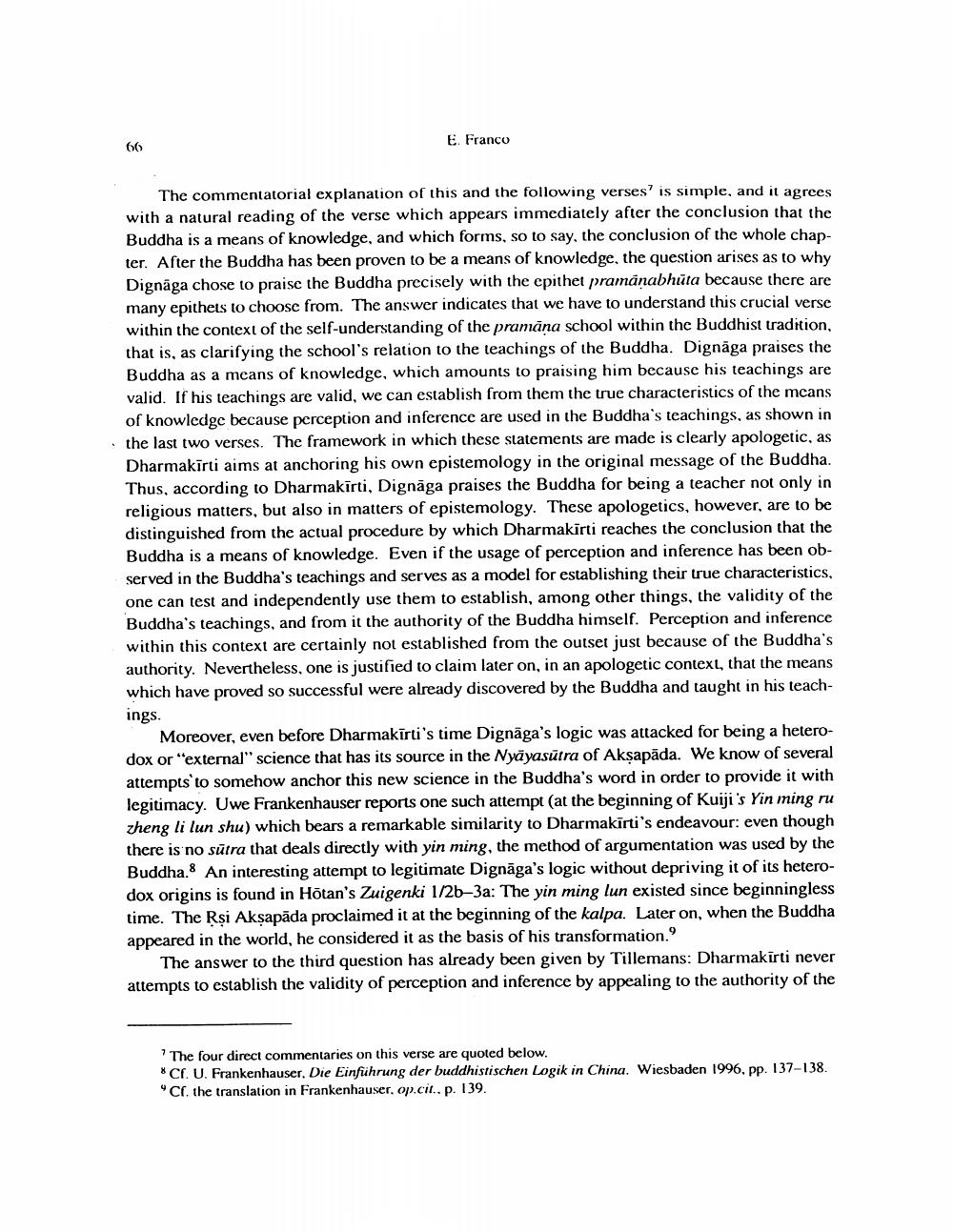Book Title: Two Circles Or Parallel Lines Author(s): Eli Franco Publisher: Eli Franco View full book textPage 4
________________ 66 E. Franco The commentatorial explanation of this and the following verses' is simple, and it agrees with a natural reading of the verse which appears immediately after the conclusion that the Buddha is a means of knowledge, and which forms, so to say, the conclusion of the whole chapter. After the Buddha has been proven to be a means of knowledge, the question arises as to why Dignāga chose to praise the Buddha precisely with the epithet pramanabhūta because there are many epithets to choose from. The answer indicates that we have to understand this crucial verse within the context of the self-understanding of the pramana school within the Buddhist tradition, that is, as clarifying the school's relation to the teachings of the Buddha. Dignäga praises the Buddha as a means of knowledge, which amounts to praising him because his teachings are valid. If his teachings are valid, we can establish from them the true characteristics of the mcans of knowledge because perception and inference are used in the Buddha's teachings, as shown in the last two verses. The framework in which these statements are made is clearly apologetic, as Dharmakīrti aims at anchoring his own epistemology in the original message of the Buddha. Thus, according to Dharmakirti, Dignāga praises the Buddha for being a teacher not only in religious matters, but also in matters of epistemology. These apologetics, however, are to be distinguished from the actual procedure by which Dharmakirti reaches the conclusion that the Buddha is a means of knowledge. Even if the usage of perception and inference has been observed in the Buddha's teachings and serves as a model for establishing their true characteristics, one can test and independently use them to establish, among other things, the validity of the Buddha's teachings, and from it the authority of the Buddha himself. Perception and inference within this context are certainly not established from the outset just because of the Buddha's authority. Nevertheless, one is justified to claim later on, in an apologetic context, that the means which have proved so successful were already discovered by the Buddha and taught in his teachings. Moreover, even before Dharmakīrti's time Dignāga's logic was attacked for being a heterodox or "external" science that has its source in the Nyayasūtra of Aksapāda. We know of several attempts to somehow anchor this new science in the Buddha's word in order to provide it with legitimacy. Uwe Frankenhauser reports one such attempt (at the beginning of Kuiji's Yin ming ru zheng li lun shu) which bears a remarkable similarity to Dharmakirti's endeavour: even though there is no sūtra that deals directly with yin ming, the method of argumentation was used by the Buddha. An interesting attempt to legitimate Dignāga's logic without depriving it of its heterodox origins is found in Hötan's Zuigenki 1/26–3a: The yin ming lun existed since beginningless time. The Rşi Aksapāda proclaimed it at the beginning of the kalpa. Later on, when the Buddha appeared in the world, he considered it as the basis of his transformation. The answer to the third question has already been given by Tillemans: Dharmakirti never attempts to establish the validity of perception and inference by appealing to the authority of the The four direct commentaries on this verse are quoted below. * CF. U. Frankenhauser, Die Einführung der buddhistischen Logik in China. Wiesbaden 1996. pp. 137-138. Cr. the translation in Frankenhauser, op.cit., p. 139.Page Navigation
1 2 3 4 5 6 7 8 9 10
